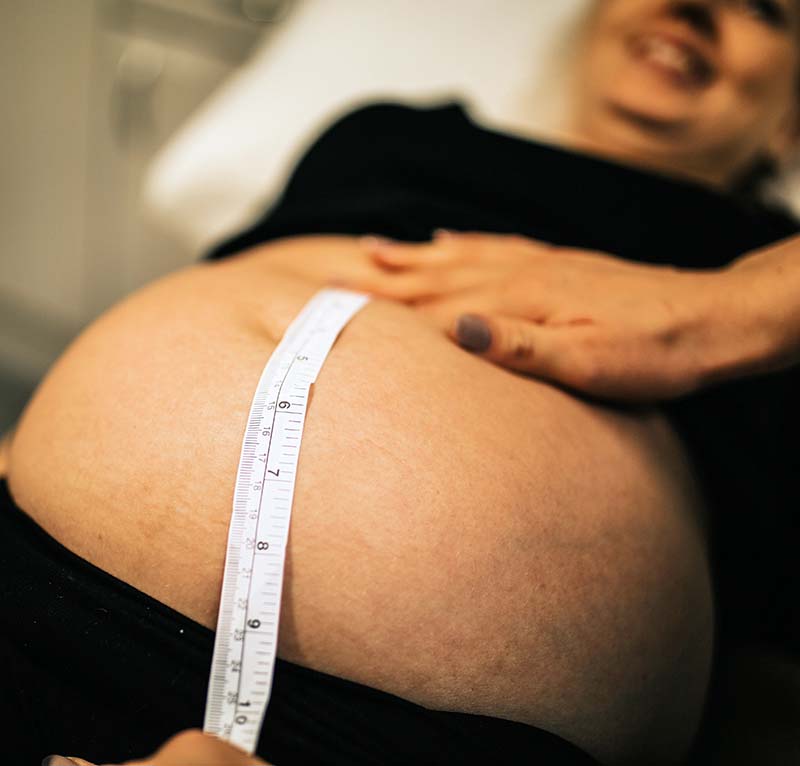You may have just received the amazing news that you’re expecting a new arrival to your family. In addition to all the emotions a new pregnancy often brings about, there are also the questions about how and where you should give birth. What will your birth plan look like? Will you decide to give birth in a traditional hospital setting, a stand-alone birthing center, or even in the comfort of your own home? Have you thought about utilizing the supportive care of a Doula? In this article, we will get you started by highlighting the differences between giving birth in a hospital birthing center versus a freestanding birthing center like South Coast Midwifery.
Although hospital based births are the most popular option for many expectant mothers across the country, more woman are considering alternatives, such as an in-hospital birth center or a freestanding birthing center. For centuries, hospital deliveries with Obstetricians have been the conventional method for birth. However, providing care at freestanding birthing centers has grown in popularity over time due to their home-like atmosphere and more holistic approach to pregnancy.
What is an accredited, freestanding birthing center?
Freestanding birthing centers are health care facilities that specialize in low-risk pregnancy and birth. They are intended to provide a home-like atmosphere for childbirth where care is provided in the midwifery and wellness model. Birth centers are an integrated part of the health care system and are guided by principles of prevention, sensitivity, safety, appropriate medical intervention and cost-effectiveness. While the practice of midwifery and the support of physiologic birth and newborn transition may occur in other settings, this is the exclusive model of care in a birth center.

Accredited birth centers respect and facilitate a woman’s right to make informed choices about her health care and her baby’s health care based on her values and beliefs. The woman’s family, as she defines it, is welcome to participate in the pregnancy, birth, and the postpartum period.
Although accredited birth centers are autonomous, freestanding facilities (separate from acute obstetric/newborn care) they have relationships with other community health agencies for complementary services, and/or the arrangement for referral and transfer to other levels of care should that need arise.
When it comes to the atmosphere, birth center rooms are intended to be home-like; a maximized home rather than a mini-hospital. With amenities more resembling a 5-star resort rather than a hospital room, the objective is to create a peaceful and relaxing sanctuary so that things may proceed naturally. With that said, accredited birth centers are also equipped with the same supplies and equipment as a level 1 labor and delivery room; all the essentials to provide routine care and initiate emergency procedures if needed. They are also located so that there is reasonable cesarean section capability.
Licensed and certified midwives with full comprehension of limits of midwifery practice, care for healthy women, and anticipate a low-risk pregnancy and birth at freestanding birth centers, with qualified obstetric/pediatric consultants available in the event of a deviation from normal. Clients of freestanding birth centers have unlimited access to their midwives to discuss questions and concerns relating to their pregnancy and birth, and may even receive in-home care if needed.
Midwives working in accredited freestanding birth centers are advocates for natural, physiologic birth. To enhance a woman’s experience, water labor and birth is offered and encouraged, and accredited birth centers may choose to offer Trial of Labor After Cesarean (TOLAC). (Note: Vaginal Birth After Cesarean (VBAC) is one result of TOLAC.). South Coast Midwifery is the only birth center in Orange County offer TOLAC services.
What is a hospital birthing center?
A hospital-based birth center is a separate area or wing within a hospital that offers birthing services alongside medical care. These facilities are not accredited birth centers, so their standards and quality of care may not always align with the Midwifery Model of Care. The care is generally more individualized and alternative, and is provided by a large group of certified midwives. Although your birth should be attended by one of your midwives, your admission and labor will be managed by rotating shift nurses, who may or may not be supportive of your birth plan, making the experience somewhat less predictable and personal. Since in-hospital birth centers are part of the hospital’s health system, the midwives have less autonomy and will likely have certain guidelines in place restricting their practice.
Some in-hospital birthing centers offer water labor, but you may not birth in the water. They are also not able to support women who have had a previous cesarean delivery (TOLAC/VBAC).
A hospital-based birth center does provide access to pain management should an expectant mother choose to have an epidural administered. With that said, easy access to this type of pain management decreases the likelihood of a natural birth, which contradicts the Midwifery Model of Care. In-hospital birth centers also have on-site cesarean section and NICU capability should these services be needed.
Should you choose a stand-alone birthing center or a more traditional hospital setting?
Whether you choose to deliver your baby at a freestanding or in-hospital birthing center depends on a few things. First, is your pregnancy a low risk pregnancy? If it isn’t, then you may be confined to a hospital setting, where full contingent of medical staff and equipment is on-hand to handle any complications that may arise. Examples include twins, breech delivery, insulin dependent diabetes, and fetal abnormalities to name a few.
Second, have you had more than one prior cesarean? Most stand-alone birthing centers do not have the capability to help women who have had multiple cesarean deliveries, so a hospital is the best birth place for those deliveries.
If your goal is to have a natural birth, with as few interventions as possible, a freestanding birth center is likely your best option since in-hospital birth centers offer Pitocin induction and epidurals to moms using their birth centers. Although these are sometimes useful interventions, they can decrease your chance of a natural birth. Generally speaking, an increase in interventions leads to an increased risk of complications, so if you desire the use of an epidural, Pitocin induction, fetal monitoring or the like, an in-hospital birth center is worth exploring.
If having family and/or friends a part of your birth is important to you, a freestanding birth center may be more open to their invitations as hospitals tend to have restrictions and mandates for visitors.
Hospital birth centers may appear to be comparable to a freestanding one, but they are sometimes not what new moms-to-be hope for. Even though they incorporate midwives as care providers, the hospital setting can often still be congested and noisy, have a clinical atmosphere and have an abundance of often unnecessary medical equipment. If you’re looking for concierge-style care, in a tranquil, but sterile environment, a freestanding birth center is something you may want to consider.


